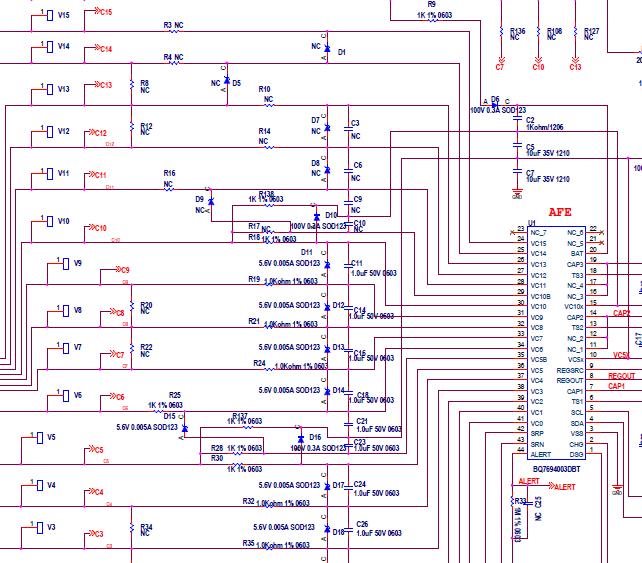Hi,
Now measure the voltage at Cell5 and Cell6 we found that the voltage is unstable as the table below:
The schematic is the same with the previous one except of the diodes that cause damaged
We have tried to remove D15 or connect D15 from CV6 to VC5x, it's more unstable, FYI
Could you please help on this? Thank you.




